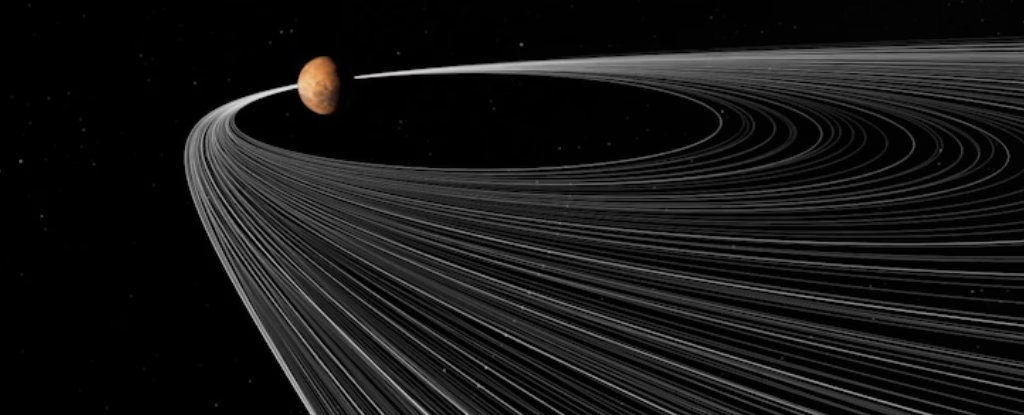Mars’ moons may actually be part of something much bigger
- November 26, 2024
- 0
Earth and Mars are the only two rocky planets in the Solar System with moons. Based on samples of lunar rocks and computer simulations, we are fairly certain
Earth and Mars are the only two rocky planets in the Solar System with moons. Based on samples of lunar rocks and computer simulations, we are fairly certain

Earth and Mars are the only two rocky planets in the Solar System with moons. Based on samples of lunar rocks and computer simulations, we are fairly certain that our Moon is the result of an early collision between Earth and a Mars-sized protoplanet called Theia.
The origins of Deimos and Phobos are less clear because we do not have rock samples from either moon of Mars. There are two popular models, but new computer simulations point to a compromise. Observations of Deimos and Phobos show that they resemble small asteroids. This is consistent with the idea that Mars’ moons were asteroids captured by Mars in its early history.
The problem with this idea is that Mars is a small planet with less gravity than Earth or Venus, which have no captured moons. Mars would have a hard time capturing even one small asteroid, let alone two. And captured moons tend to have more elliptical orbits than the circular orbits of Deimos and Phobos.
An alternative model states that Mars’ moons were the result of an early collision similar to the one between Earth and Theia. In this model, an asteroid or comet about 3 percent the mass of Mars hit the planet. Although it is not large enough to shatter Mars, it could create a large ring of debris from which two moons could form.
This could explain the more circular orbits, but the challenge is that debris rings tend to form near the planet. While Mars’ larger moon Phobos orbits close to Mars, Deimos does not.
This new model offers an interesting middle ground. The authors suggest a near-fall of a large asteroid rather than an impact or outright capture. If the asteroid passes close enough to Mars, the planet’s tidal forces will break the asteroid apart and create a series of fragments.
Many of these pieces will be captured in elliptical orbits around Mars. According to computer simulations, the orbits of the Sun and other bodies in the Solar System will change over time due to the small gravitational forces, which will eventually cause some pieces to collide. This would create a debris ring similar to the impact ring, but with a wider distance range that would better accommodate both Phobos and Deimos.
Although this new model looks better than the capture and impact models, the only way to solve this mystery will be to examine samples taken from Mars’ moons. Fortunately, the Mars Moons eXploration (MMX) mission will launch in 2026. It will explore both moons and collect samples from Phobos. So we need to finally understand the origin of these mysterious moons of the Red Planet.
Source: Port Altele
As an experienced journalist and author, Mary has been reporting on the latest news and trends for over 5 years. With a passion for uncovering the stories behind the headlines, Mary has earned a reputation as a trusted voice in the world of journalism. Her writing style is insightful, engaging and thought-provoking, as she takes a deep dive into the most pressing issues of our time.